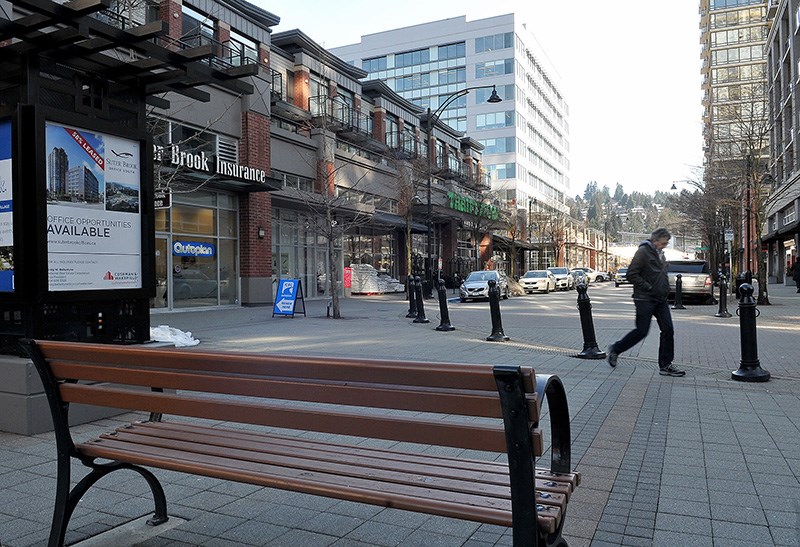Port Moody will spend $25,000 to study the implementation of pay parking on city streets in Suter Brook village, as well as other areas of the city.
Currently, the only pay parking on civic facilities is for the boat launch at Rocky Point Park.
The study, which is still unfunded and hasn’t been given a timeframe, is one of several staff recommendations endorsed by city council last week to address traffic and pedestrian safety issues in Suter Brook.
The plan will cost city taxpayers almost $500,000, even though one of the problematic streets is owned by the developer.
Stephen Judd, Port Moody’s manager of traffic, said the recent introduction by Onni of paid parking at Suter Brook has increased pressure on the free parking stalls on nearby city streets and caused even more traffic concerns as drivers circulate looking for those spots. He said the parking study, which will be conducted by a consultant, will "include an evaluation of the city's current parking regulations, and a review of parking demand, availability, duration and turnover throughout the city."
Judd said the city’s action was prompted by Suter Brook residents voicing their frustrations with traffic in the neighbourhood during council’s consideration of Onni’s proposal to develop its final parcel of property at 300 Morrissey St. That project, which will comprise two 26-storey condo towers and a six-storey rental building, is currently under construction.
Judd said concerns were identified through an online survey as well as a walking tour. They included speeding, a lack of loading bays to service businesses and congestion cause by daytime deliveries to those businesses as well as garbage collection.
In addition to the parking study, the city will immediately spend $35,000 on a year-long pilot program to make Brew Street one-way.
Judd explained the money will be used to install plastic markers and signage where the private road intersects Morrissey and Capilano streets as well as Suter Brook Way — all of them public roads.
If the trial proves successful, it will cost another $160,000 to make the change permanent.
If it’s not, the city could look at the implications of closing off the street to traffic completely, although city manager Tim Savoie warned that could violate the city’s land use contract with Onni.
Port Moody will also spend $5,000 next year to evaluate street lighting levels in Suter Brook Village.
Future improvements include replacing the pavers currently on Suter Brook Way with asphalt and rebuilding the intersections at Brew and Morrissey streets to make pedestrian crossings more apparent. That project would cost $250,000, although it would have to be prioritized against other paving needs in PoMo.
Port Moody’s general manager of engineering and operations, Jeff Moi, said the latter could actually end up saving the city money in the long run as asphalt is easier and cheaper to maintain. He said the city could discuss with Onni increasing the company’s financial commitment to the project beyond the $2,000 it will spend next year to create new zones for garbage bins awaiting pickup.
Moi explained the city is mostly on the hook because the majority of changes are occurring on public streets and intersections it controls.
He said while great care was taken to design traffic-calming measures when Suter Brook was being developed, some of them “didn’t come out exactly as we’d hoped.”
Savoie said many of the problems are actually due to “driver behaviour.”
“We have to somehow help people in how traffic moves and parks in that area.”



